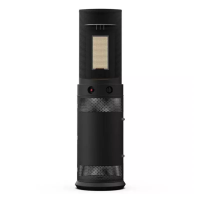Mimosa Backhaul Help Content
Mimosa Backhaul White Papers & Application Notes
Copyright © 2014 Mimosa Page 228
TDMA-FD
Product Applicability: B5/B5c, B11
In addition to standard TDMA modes, Mimosa Backhaul radios support a Frequency Diversity (FD) mode which
allows different transmit and receive channels on each side of a link. TDMA-FD differs from Frequency Division
Duplex (FDD) in that each side of the link still takes turns sending and receiving like in standard TDMA, but on
separate channels in each direction. This is useful when there is no channel that is mutually suitable for both
transmit and receive on both sides of a link.
Channel Width and Capacity
In FD mode, two different channels are selected, and both must have the same channel width: 20, 40 or 80 MHz.
The total channel width is the sum of both channels, but link capacity is half of what is normally expected for the
same channel width. This is because each side is transmitting for a portion of the time. The FD modes are less
spectrally efficient than non-FD modes, so they should only be used when necessary.
Channel Mode Channel 1 (Tx) Channel 2 (Rx) Total Channel Width
1x20 FD 20 MHz 20 MHz 40 MHz
1x40 FD 40 MHz 40 MHz 80 MHz
1x80 FD 80 MHz 80 MHz 160 MHz
Application Example
Spectrum Challenge
A Station has spectrum available between 5150 and 5200 MHz, but the Access Point only has spectrum available
between 5500 and 5600 MHz. Since the spectrum available does not overlap, the best performance can be achieved
by using the Frequency Diversity (FD) mode.
Station Spectrum
Access Point Spectrum

